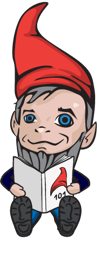Do you ever wish you could sit back, relax, and have customers flocking to your business?
Stop dreaming: as we're about to help you turn this wish into reality.
As our markets continue to evolve and more and more businesses that offer similar products and services continue to flood the market, ensuring your delivering quality content and driving engagement to your target audience is vital to remain in the competition.
With that in mind, if your business still relies on traditional marketing strategies -which often overlook customer needs- your business will fail to make an impact and, eventually, fall behind.
But it doesn't have to be this way, and that's where inbound marketing methodology comes into play.
So, what exactly is inbound methodology? And how can it transform the way you do business?
We've put together this informative guide to answer these questions. Let's dive in.
Traditional Marketing vs. Inbound Marketing Methodology
Before jumping into inbound marketing, let’s take a step back and analyze how traditional marketing practices differ.
Essentially, the main objective of traditional marketing is to provide the right promotional incentive to the consumer to buy a product or service. In other words, it involves pushing your brand by reaching out to as many prospects as possible in the hopes of converting them into leads.
Typically, the techniques used to achieve this include cold calls, television commercials, print advertising, and junk mail. These techniques, however, are becoming less and less effective for various reasons:
- the emergence of technologies that provide consumers with tools created to avoid unsolicited advertisements,
- our digitally connected world that empowers consumers with detailed specs, pricing, reviews, competitor comparisons, and more,
- the sheer amount of information produced that is making it hard to hold the attention of audiences,
- the yearning to be a part of the conversation and engage with brands with which consumers feel a strong connection.
This powerful market shift led to a new, customer-centered marketing strategy: inbound marketing.
Inbound marketing is a customer-focused marketing strategy that empowers potential customers to reach their goals by providing them with solutions for their needs and pain points. Essentially, you want to be able to drive or pull customers to you by building meaningful, long-lasting relationships. Unlike traditional marketing tactics, with inbound marketing, you only directly engage with potential customers after they have permitted you to do so by providing contact details.
When utilized effectively, inbound marketing methodology presents immediate, long-term benefits to businesses, for example:
- Improving SEO
- Driving brand awareness
- Increasing customer satisfaction and engagement
- Influencing future purchase decisions
- Drive higher conversion rates and for less money than traditional marketing. In fact, content marketing generates three times more leads for each dollar invested and is 62% less costly than traditional methods.
Content Marketing and the Inbound Marketing Methodology
So, now that you understand the value of inbound marketing, it's time to begin!
The first step to planning a successful inbound marketing strategy is to create a strategic content marketing plan tailored for the three stages of the inbound marketing methodology: attract, engage, and delight. Each one of these stages represents a step your potential customer takes along the buyer journey.
%20(1)%20(1).png?width=1500&name=HubSpot-English-Flywheel%20(1)%20(1)%20(1).png)
Credits: Hubspot.com
Attract
In the attract stage of the inbound methodology, you should focus on turning strangers into visitors by, you guessed it, attracting new visitors to your site.
You can accomplish this by creating valuable content and experiences tailored to their needs. Some of the most effective tools are blog posts, social media platforms, consultation calls, infographics, images, videos, and even your own website content. Remember, the goal is to establish your business as a trusted adviser! So ensure you're providing value to the visitor with every piece of content you publish.
Engage
If potential customers entered the engage stage, then the content you produced thus far was valuable enough for them to seek out your website for more information. In other words, these visitors found your content interesting, informative, and trustworthy and would like to see more of what you have to share.
With that in mind, the content you create during this stage is essential: either it can disappoint potential customers and make them skeptical about your product OR turn them into leads.
Therefore, in this stage, you want to engage those visitors by presenting further insights and solutions that align with their pain points. Some great examples of valuable, engaging content you can utilize in this stage are e-books, white papers, case studies, in-depth podcasts, newsletters, and other educational resources.
At this point, the most important thing is to ensure that the content you produce helps create long-lasting, meaningful relationships with prospects.
During this stage, the aim is to turn them into leads, which happens when visitors deliberately leave their contact information on your website or, more specifically, on the content page created for this purpose.
Once visitors finally become leads and share their contact information, you're one step closer to gaining a loyal customer!
Delight
If customers are in the delight stage, it means you finally made your sale, congratulations! However, you’re not finished just yet - your work now needs to focus on building customer loyalty, as this will help ensure that your customer will want to keep buying from you in the future.
In this stage, the key is to provide continuous help and support that empowers your customers to find success. By doing so, customers will more likely share their positive experiences with their networks, attracting new prospects to your business and creating a self-sustaining loop. In other words, when your consumers succeed, you succeed. And, naturally, once delighted, you can rest assured they'll be coming back for more.
Part of the content strategy in this stage uses some principles mastered in the attract phase, this time in the form of follow-up personalized email marketing campaigns. The idea is to continue to create and promote killer content, but now you have an advantage - you can create content for customers you already know. In doing so, you can provide them with recommendations on other products or services they may need in the future.
Note: in this stage, you can facilitate your efforts with marketing automation.
Automation will help you deliver the right message to the right person at the right time and free up your time to focus on creating and analyzing your content strategy to ensure it's optimized to convert other prospects.
How to Create the Right Type of Content

Content creation, promotion, and optimization certainly play a crucial role in attracting, engaging, and delighting potential customers.
Each stage of the inbound methodology needs to be characterized by high-quality, informative, and unique content to make an impact and empower your potential customers to act and move through the buyer's cycle. But, this is easier said than done, given that the amount of available data on the web is growing exponentially. In fact, at least 2.5 quintillion bytes of data is produced daily!
So, how can you cut through the noise?
It's simple:
- turn to SEO and conduct keyword research
- discover what people are talking about (i.e., trendy topics) with social listening
- unlock your competition's strengths with a competitor analysis
- and lastly, tap into the power of analytics by understanding what's working.
Doing so will help you determine which queries are most searched for by your target audience - after all, you want to attract the right customers, not just any visitor.
Once you have a clearer idea of which words are relevant to your audience, the hot topics they are interested in, and what's working for your competition, you can begin to fill out a content calendar and create content.
Once you’ve mapped out your content strategy, you'll be ready to build authority, outrank the competition, and attract loyal customers. Remember, the key is to keep it short and educational, never promotional.
Once you've created an outstanding piece of content, it's time to learn from it. Tap into your analytics to understand what is working in your content strategy and what needs to be improved. Analyze your data to secure your chances of creating additional outstanding pieces of content that convert.
Inbound Marketing Is All About What Your Client Needs
Every phase of an inbound marketing methodology points back to offering a solution to your customers’ needs. Therefore, you must produce optimized content for each stage:
- During the attract stage, you identify your customers’ pain points and produce content that provides them with a solution.
- Then, you further engage with more insightful, valuable content in exchange for their contact information.
- And ultimately, you delight your engaged customers by following up with more relevant and timely information that will boost engagement and encourage them to spread the word about your business.
All in all, the secret of a successful inbound marketing strategy is understanding what your customers need. Combine that with the right tools and personalized, valuable content, and all your effort will pay off.
Want to learn more about developing a successful inbound marketing strategy? Reach out to our experts today for a free consultation call and learn how we can help your business smash your goals.
